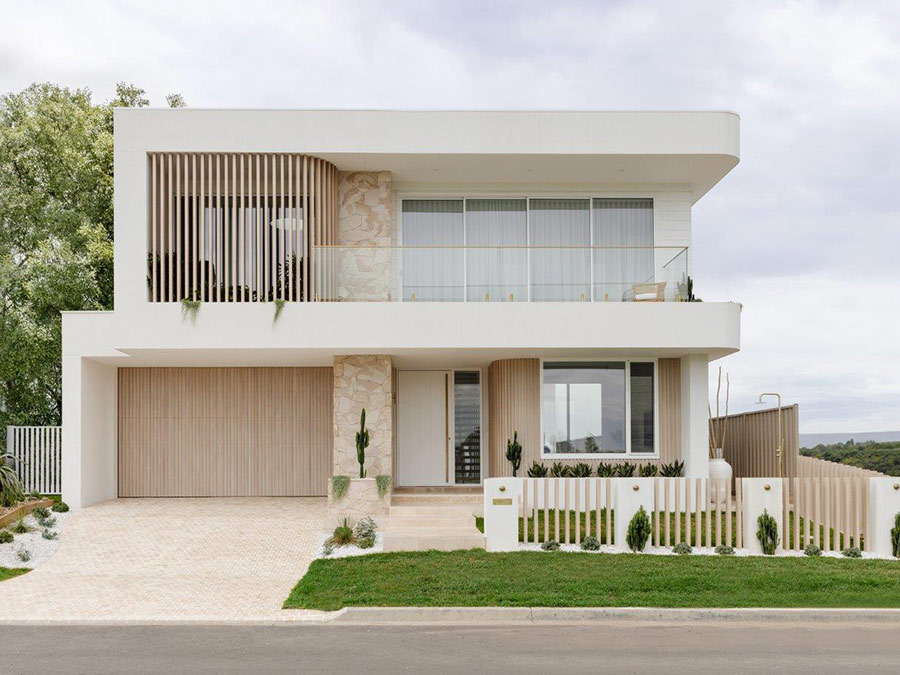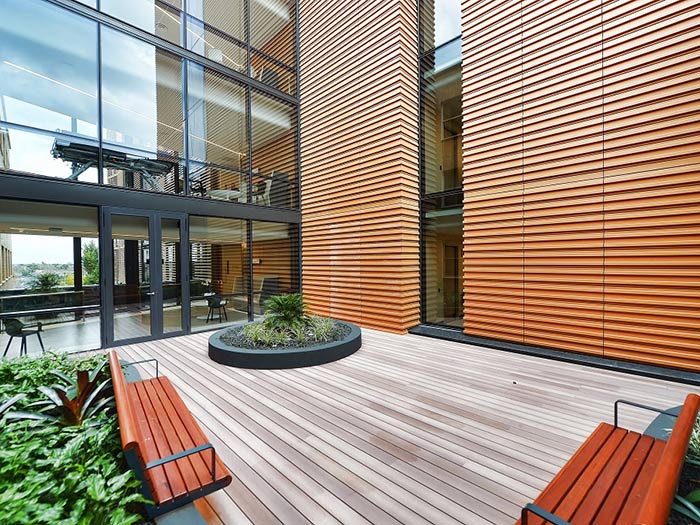While the urgency of the climate crisis might make short-term solutions and quick gains particularly appealing, sustainability is a long-term game – and prioritising environmental outcomes across the entire building life cycle is essential in the pursuit of a more resilient built environment. While energy-efficient systems and renewable energy sources should remain paramount, it's imperative to remember that a significant portion of a building's lifetime environmental impact is attributed to its operational and maintenance phases. This reality underscores the importance of material selection in sustainable building design, and low-maintenance materials are emerging as a key lever in minimising the environmental footprint, and creating truly sustainable structures. Among these materials, aluminium stands out as a versatile and enduring solution.
The low-maintenance powerhouse
Renowned for its modern aesthetic and adaptability, aluminium's inherent properties make it a natural fit for low-maintenance building solutions. Its exceptional resistance to corrosion, rust, and degradation translates into unmatched longevity, making it particularly well suited for the harsh Australian climate, marked by intense sun exposure and corrosive coastal conditions. In addition, unlike wood or steel, aluminium doesn't require regular staining, painting, or other treatments that not only consume resources but potentially release harmful chemicals like Volatile Organic Compounds (VOCs).
 Seaside property in Shell Cove, NSW. DecoBatten® profiles in low maintenance DecoWood® Curly Birch finish.
Seaside property in Shell Cove, NSW. DecoBatten® profiles in low maintenance DecoWood® Curly Birch finish.
This durability is further enhanced by advanced surface treatments, like powder coating and anodising. As Michael Stacey, author of ‘Component Design’, states, "The development of finishes for aluminium is an example of sustained R&D within the building industry. The guarantees offered on 'super-durable' polyester powder coating and anodising represent some of the best product assurance within construction."
In essence, aluminium stands strong where other materials falter.
Aluminium's environmental edge
The environmental advantages of aluminium extend throughout a building's life cycle. Specifying powder-coated or anodised aluminium eliminates the need for ongoing coatings and treatments, which helps conserve resources – both the raw materials, and the energy required for manufacturing and transportation. Plus, fewer repairs and replacements result in a significant decrease in waste sent to landfills – which contributes to a circular economy and reduces the embodied carbon emissions associated with material production, replacement and transportation.
While primary aluminium production can be energy-intensive, using renewable energy sources during production significantly reduces its embodied carbon, and recycled aluminium has an even lower embodied carbon footprint. For instance, LocAl® Green – a locally extruded lower-carbon primary aluminium by Capral Aluminium that has been available in Australia since 2023 – has an embodied carbon footprint of less than 8 kg CO2e/kg Al, significantly lower than the global average for primary aluminium production. And because aluminium is highly recyclable, it offers architects, designers and specifiers an opportunity to further lower the long-term impact of their projects on the environment.
Economic benefits: Investing in longevity
However, the advantages of low-maintenance materials like aluminium are not only environmental – they're also economically sound. While sourcing low-maintenance options can mean the initial investment can be higher, significant cost savings can be achieved over a building's lifespan.
Reduced need for repairs, repainting, and treatments translates into substantial savings for building owners – and these can be particularly significant in large-scale projects. For instance, specifying powder-coated aluminium for a commercial facade removes the need for regular repainting, potentially saving tens of thousands of dollars over the building's lifespan.
Moreover, quality finished aluminium's outstanding durability and resistance to weathering and degradation helps create longer-lasting, more resilient structures. Buildings that require fewer repairs and replacements maintain their value over time, making them a more attractive investment for owners and potential buyers.
Overcoming challenges: Making sustainable choices accessible
While challenges like higher upfront costs and limited suppliers are a consideration, the long-term benefits of low-maintenance materials are undeniable, and can significantly outweigh these initial hurdles. The long-term financial and environmental savings – and, by extension, improved occupant comfort and quality of life – justify this investment, plus architects and designers can also employ several strategies to help address some of these upfront challenges.
Conducting a comprehensive Life Cycle Assessment (LCA) is an excellent way to quantify the long-term environmental and economic benefits of low-maintenance options compared to traditional building materials. In addition, exploring design options that prioritise the strategic use of enduring materials in high-wear areas, can help balance costs and benefits. For example, it can involve using aluminium for external cladding or roofing, where its durability and weather resistance are most beneficial.
Lastly, collaboration with leading suppliers like DECO Australia, who offer diverse aluminium building product ranges at various price points, can ensure a solution that fits the project's design vision, budget and timeline – particularly with early engagement in the design process. This can assist with ensuring material availability, securing the right products, and allows for better integration of aluminium systems, ensuring optimal performance and avoiding costly modifications later on.
Beyond these inherent advantages, various government initiatives and programs can help offset costs and incentivise their use. The National Construction Code's increased focus on energy efficiency certainly aligns with the benefits of aluminium, and several state and territory programs offer incentives for building upgrades that prioritise sustainability. Furthermore, incorporating low-maintenance materials can contribute to achieving green building certifications such as Green Star, which offer additional benefits.
DECO: Outstanding low-maintenance aluminium products
With its extensive range of high-quality aluminium building products and unwavering commitment to sustainability, DECO is an ideal partner for architects and designers looking to minimise their projects’ environmental impacts through strategic specification of low-maintenance materials.
 DecoDeck® aluminium cladding at Cabrini Hospital in Victoria. No painting or staining, and no rotting or warping.
DecoDeck® aluminium cladding at Cabrini Hospital in Victoria. No painting or staining, and no rotting or warping.
With exceptional quality control and essential accreditations, their aluminium building product range offers a reliable, life-long solution – emerging as a real stand-out in the low-maintenance construction materials space. "DECO is an accredited Qualicoat and Qualicoat Seaside applicator, which means we adhere to the international process specification to ensure quality results,” explains Simon Pearson, the company’s Architectural Business Manager. “This includes specific pre-treatment processes as well as 18 tests, with many tests carried out across each order that goes through our factory."
Additionally, DECO has adopted LocAl® Green across all their aluminium supplies from Capral Aluminium. Through this transition, DECO offers a lower-carbon aluminium option, ensuring the same performance, durability, and low maintenance, which grants the architectural community an opportunity to further step up their sustainability efforts.
With its minimal maintenance requirements, longevity, and availability of lower-carbon, responsibly sourced options, high-quality aluminium building products certainly challenge the conventional notion of building life cycles. They offer a tangible solution for minimising environmental impact while maximising occupant comfort, building value, and even aesthetic appeal for generations to come. By considering the long-term implications of material selection, partnering with suppliers like DECO, and incorporating powder-coated or anodised aluminium into their projects, architects and designers can create a built environment that embodies principles of sustainable design in a more holistic, impactful and long-term way.

